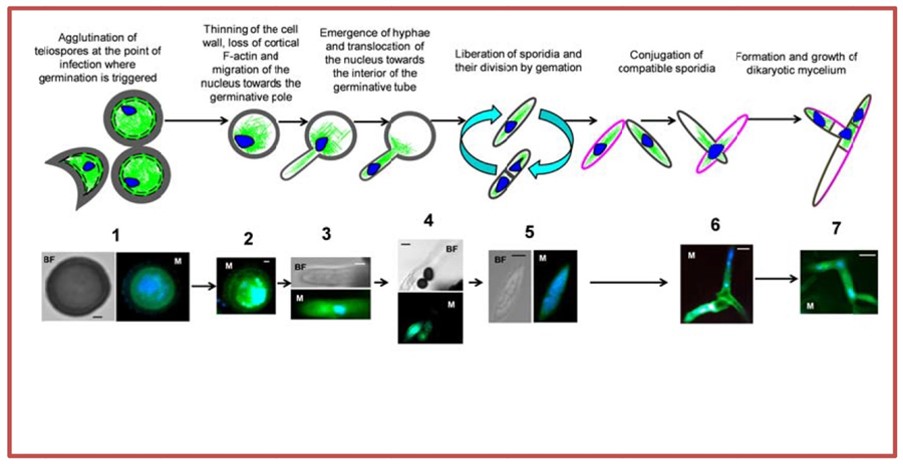Sánchez-Elordi, E., Baluska, F., Vicente, C., Legaz, M.E.
Sugarcane glycoproteins control dynamics of cytoskeleton during teliospore germination of Sporisorium scitamineum
Mycol. Progr. 18:1121-1134, 2019.
DOI: 10.1007/s11557-019-01510-5
RESUMEN
Sporisorium scitamineum teliospores possess an organized cytoskeleton involved in important developmental and physiological processes. It has been described that microtubules appear to be fundamental for nucleus translocation during germination and hyphal growth whereas actin polymerization is necessary for the formation of invaginations during teliospore displacement. Here, a global vision of the actin cytoskeleton organization throughout the life cycle of S. scitamineum cells is shown, providing evidence that a perfectly structured F-actin network is necessary to trigger smut pathogenicity. Moreover, although myosin presence in teliospores had been previously described, herein actin and myosin co-location is demonstrated by confocal microscopy during both invaginations formation and germination. In turn, F-actin and microtubules (MTs) interact, jointly participating in the establishment of cell polarity. The resistant sugarcane cultivar Mayari 55-14 produces high molecular mass glycoproteins (HMMG) that differently affect F-actin organization at different stages of fungal development. HMMG first supported F-actin to induce the movement of teliospores towards the cytoagglutination points. At later stages of fungal development, HMMG disorganized F-actin which prevented the protrusion of germinative tube. A continuous exposure to HMMG provoked apoptosis in pathogenic, diploid cells and a delay in sporidia conjugation that could be crucial for plant resistance.
